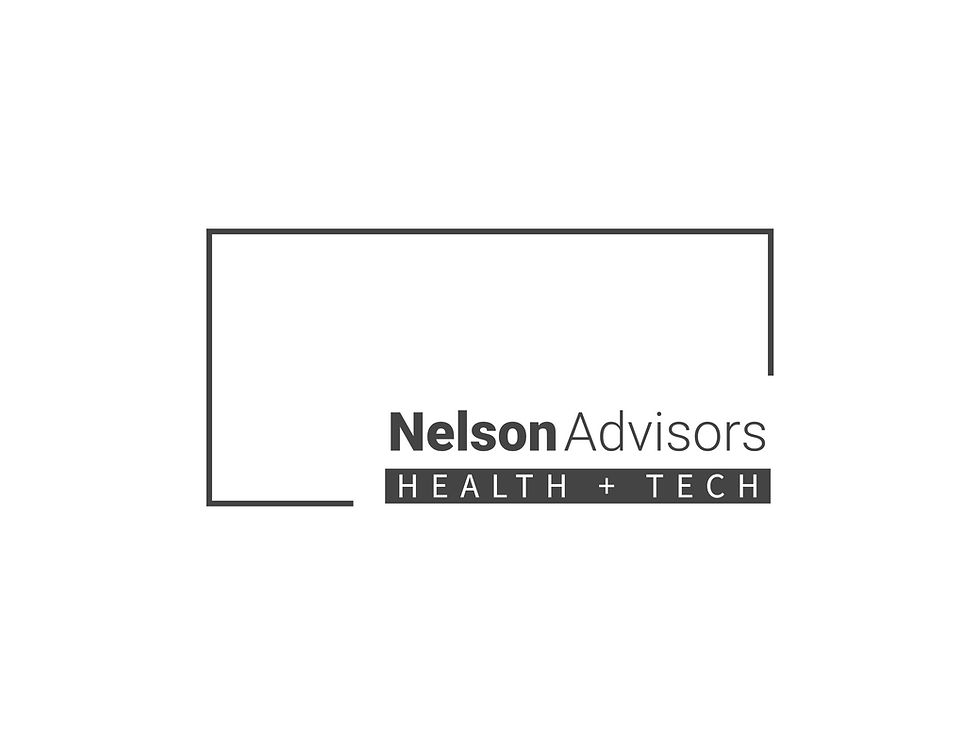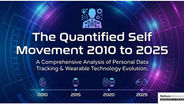AI Scribes and Ambient AI: Key Differences for Healthcare Providers
- Lloyd Price
- May 31
- 7 min read
Updated: Jun 1

Overview of AI Scribes and Ambient Artificial Intelligence
AI Scribes and Ambient Artificial Intelligence (AI) are transformative technologies in healthcare designed to streamline clinical documentation, reduce administrative burdens, and enhance patient-provider interactions.
These tools leverage advanced AI, including large language models (LLMs), speech recognition, and natural language processing (NLP), to automate the process of capturing and documenting patient encounters.
Below is a comprehensive overview of AI scribes and ambient AI, including their functionality, benefits, challenges, and applications.
What Are AI Scribes and Ambient AI?
AI Scribes: AI scribes, also referred to as automated medical scribes, digital scribes, virtual scribes, or ambient AI scribes, are tools that transcribe and summarize medical conversations, such as patient consultations or dictated notes. They use AI technologies to generate structured clinical notes, reducing the time clinicians spend on documentation. Unlike traditional dictation tools or human scribes, AI scribes operate autonomously or with minimal human oversight, often integrating directly with electronic health record (EHR) systems.
Ambient AI: Ambient AI is a subset of AI that operates proactively and intuitively in the background, responding to environmental cues (e.g., conversations) without requiring direct user input. In healthcare, ambient AI refers to technologies that "listen" to patient-provider interactions, transcribe them in real-time, and generate clinical documentation or other outputs (e.g., coding suggestions, patient summaries). These systems are designed to be unobtrusive, enhancing workflow efficiency while maintaining focus on patient care.
Key Components:
Automatic Speech Recognition (ASR): Converts spoken conversations into text transcripts.
Natural Language Processing (NLP): Analyses transcripts to extract relevant clinical information and generate structured notes, such as SOAP (Subjective, Objective, Assessment, Plan) notes.
Large Language Models (LLMs): Power the synthesis of transcripts into concise, accurate, and specialty-specific clinical documentation. Examples include models like GPT-4.
EHR Integration: Many AI scribes integrate with EHR systems to directly input notes, codes, or orders, streamlining workflows.
How AI Scribes and Ambient AI Work
Capture: A secure microphone (often on a smartphone or dedicated device) listens to patient-provider conversations or clinician dictations in real-time. Audio is typically not stored to ensure privacy compliance (e.g., HIPAA).
Transcription: ASR technology converts the audio into text transcripts.
Synthesis: NLP and LLMs process the transcript to identify key clinical details, filter out irrelevant information (e.g., small talk), and generate structured clinical notes, coding suggestions, or patient summaries.
Review and Integration: Clinicians review and edit the AI-generated notes before finalizing them in the EHR. Some systems also automate tasks like coding (e.g., CPT, ICD-10), referrals, or patient follow-up instructions.
Example Workflow:
A physician conducts a patient visit, and the ambient AI scribe listens via a smartphone app.
The system transcribes the conversation, filters out non-clinical content (e.g., discussions about pets), and generates a SOAP note within minutes.
The physician reviews and edits the note, then uploads it to the EHR with a single click.
Applications and Use Cases
AI scribes and ambient AI are used across various healthcare settings and specialties, including:
Primary Care: Automates documentation for routine check-ups, allowing physicians to focus on patient interaction.
Specialty Care: Tailored for complex fields like oncology, psychiatry, or orthopaedics, where notes require specific terminology or longitudinal data. For example, DeepScribe’s oncology-specific AI handles detailed cancer care documentation.
Emergency Medicine: Supports high-volume settings where rapid, accurate documentation is critical.
Mental Health: Tools like Mentalyc generate intake and progress notes for psychotherapy, capturing nuanced patient histories.
Home Health: Tools like Andy assist with OASIS assessments, improving accuracy in home health visits.
Additional Features:
Coding and Compliance: Automates CPT and ICD-10 coding, reducing billing errors.
Patient Summaries: Generates after-visit summaries (AVS) to reduce follow-up inquiries.
Referrals and Orders: Automates referral letters and lab orders, streamlining workflows.
Benefits
Reduced Documentation Burden:
Studies show AI scribes save physicians significant time, with some reporting an average of 1 hour per day saved on documentation.
A Stanford pilot found a 24.42-point reduction in task load and a 1.94-point reduction in burnout scores.
Median time per note reduced by 0.57 minutes, and daily documentation time decreased by 6.89 minutes in one study.
Improved Patient-Provider Interaction:
By automating note-taking, clinicians can maintain eye contact and engage more fully with patients, enhancing the patient experience and care quality.
Enhanced Efficiency:
AI scribes streamline workflows by integrating with EHRs, automating coding, and reducing after-hours clerical work.
Adoption rates are high, with 20–80% of clinicians using the technology where available, and some organisations reporting 90% uptake in primary care.
Cost-Effectiveness:
AI scribes cost approximately $100/month per user compared to $2,800/month for human scribes, offering significant savings.
Small practices and large health systems alike benefit from scalable solutions.
High Accuracy:
Tools like DeepScribe claim 59% higher accuracy than GPT-4 alone, with some achieving 90–98% accuracy in generating structured notes.
Challenges and Limitations
Accuracy Issues:
AI scribes may struggle with complex interactions, such as case conferences or multilingual conversations, and can produce errors like misattributing speakers or omitting critical details.
LLMs may generate “hallucinations” (convincing but incorrect information), requiring careful clinician review.
Privacy and Security:
Compliance with HIPAA and other regulations (e.g., FOIPPA in Canada) is critical. Some systems use zero-knowledge encryption, while others may send data to external servers, raising privacy concerns.
Patient consent is required before recording interactions, and secure data handling is essential.
Integration Challenges:
Seamless EHR integration is necessary to avoid additional clinician workload. Compatibility issues can hinder adoption.
Some systems require deeper EHR integration for advanced features like order entry or flowsheet updates.
Adoption Barriers:
Clinicians who have optimised manual documentation processes may see less benefit and resist adoption.
Training and customisation are needed to align notes with individual clinician styles or specialty needs.
Cost and Scalability:
While cheaper than human scribes, implementation and maintenance costs can be significant for smaller practices.
Ongoing updates and training requirements add to expenses.
Ethical and Legal Concerns:
Physicians remain accountable for AI-generated errors, necessitating thorough review.
Bias in algorithms or misuse of patient data for training raises ethical questions

Ambient AI vs AI Scribe: What’s the Difference?
While both "Ambient AI" and "AI Scribes" aim to streamline documentation and improve efficiency in healthcare, they differ significantly in their scope, integration, and the breadth of support they offer:
AI Scribes (or Digital/Virtual Scribes)
Core Function: Primarily focuses on transcribing spoken conversations between a healthcare provider and a patient during a consultation. Their main output is a draft clinical note.
Scope: Typically acts as a point solution or a standalone application. Their primary purpose is to automate the note-taking aspect of a patient encounter.
Integration: May have limited or less deep integration with Electronic Health Records (EHRs). The generated notes might need to be manually reviewed, edited, and then copied or imported into the EHR.
Workflow Support: Primarily supports the "during visit" phase by capturing the spoken dialogue. They largely reduce the need for manual typing during the consultation.
Output: Generates a draft clinical note (e.g., SOAP note, general consultation summary) for the clinician to review and finalise.
Analogy: Think of an AI Scribe as a highly advanced, automated stenographer for medical consultations.
Ambient AI in Healthcare
Core Function: Encompasses a broader, more seamless and integrated AI technology that not only handles documentation from conversations but also proactively assists with various aspects of the clinical workflow. It operates in the background, often without explicit commands.
Scope: Designed to support the entire patient journey and clinical workflow – before, during, and after the visit.It aims to create an "intelligent environment" within the care setting.
Integration: Characterised by deep integration with EHR systems and other clinical tools. This allows Ambient AI to pull relevant patient data pre-visit, document seamlessly during the visit, and automate post-visit tasks directly within the existing clinical ecosystem.
Workflow Support: Provides comprehensive support, including:
Pre-visit: Surfacing relevant patient history, lab results, or imaging prior to the encounter.
During visit: Unobtrusively capturing conversations and generating documentation, but also potentially offering real-time clinical decision support.
Post-visit: Automating tasks like generating referral letters, ordering tests, populating billing codes, sending follow-up instructions to patients, and updating various parts of the patient's record.
Output: Beyond just draft notes, it can generate a range of outputs, including summaries, letters, forms, and suggestions for follow-up actions, all integrated into the patient's record.
Analogy: Think of Ambient AI as a comprehensive, intelligent assistant that anticipates needs and performs tasks across the entire clinical encounter, blending seamlessly into the background.
Key Differences Summarised
Feature | AI Scribe | Ambient AI |
Scope | Narrow: Primarily documentation | Broad: Documentation + workflow automation |
Integration | Point solution, less deep EHR integration | Deeply integrated with EHRs and clinical systems |
Workflow Phase | Primarily "during visit" | "Before, during, and after" visit support |
Interaction | Focus on transcribing spoken word | Unobtrusive, operates in the background, proactive |
Output Range | Draft clinical notes | Notes, referrals, orders, billing codes, follow-ups |
In essence, an AI Scribe is a component or a specific application within the broader concept of Ambient AI. Many technologies that started as "AI Scribes" are evolving to offer more "ambient" capabilities, blurring the lines as they integrate more deeply into the clinical workflow. The goal of both is to free healthcare providers from administrative burdens, allowing them to focus more on patient care.
Nelson Advisors > Healthcare Technology M&A
.
Nelson Advisors specialise in mergers, acquisitions & partnerships for Digital Health, HealthTech, Health IT, Consumer HealthTech, Healthcare Cybersecurity, Healthcare AI companies based in the UK, Europe and North America. www.nelsonadvisors.co.uk
Nelson Advisors regularly publish Healthcare Technology thought leadership articles covering market insights, trends, analysis & predictions @ https://www.healthcare.digital
We share our views on the latest Healthcare Technology mergers, acquisitions & partnerships with insights, analysis and predictions in our LinkedIn Newsletter every week, subscribe today! https://lnkd.in/e5hTp_xb
Founders for Founders > We pride ourselves on our DNA as ‘HealthTech entrepreneurs advising HealthTech entrepreneurs.’ Nelson Advisors partner with entrepreneurs, boards and investors to maximise shareholder value and investment returns. www.nelsonadvisors.co.uk
#NelsonAdvisors #HealthTech #DigitalHealth #HealthIT #Cybersecurity #HealthcareAI #ConsumerHealthTech #Mergers #Acquisitions #Partnerships #Growth #Strategy #NHS #UK #Europe #USA #VentureCapital #PrivateEquity #Founders #BuySide #SellSide
Nelson Advisors LLP
Hale House, 76-78 Portland Place, Marylebone, London, W1B 1NT
Contact Us
Meet Us
Digital Health Rewired > 18-19th March 2025
NHS ConfedExpo > 11-12th June 2025
HLTH Europe > 16-19th June 2025




















































Comments